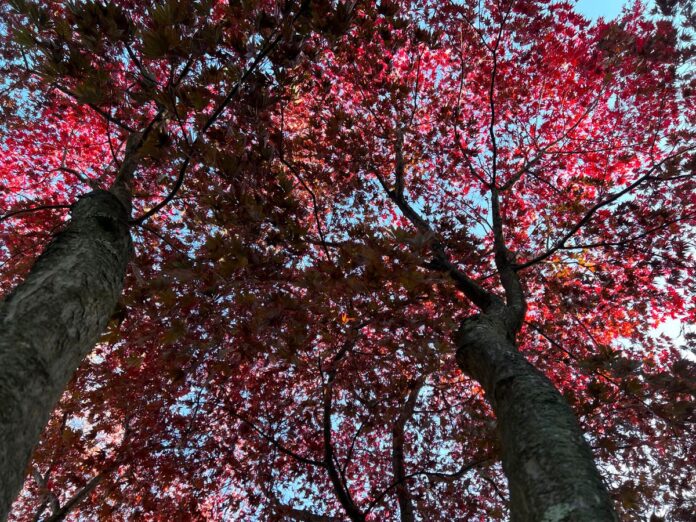The landscape across much of the country has changed from green to vibrant shades of yellow, orange, red and even purple. But is this dramatic annual kaleidoscope the leaves’ transformation into something new? Not exactly.The visual feast we see in autumn is actually a return to normal for the leaves. The real magic occurs in spring, when trees and shrubs begin using sunlight to produce the green pigment chlorophyll and photosynthesize it into food to sustain themselves during the growing season. When that happens, the plants’ naturally colorful leaves take on the green hue we associate with them.When summer gives way to fall, temperatures drop, days shorten, and the amount and intensity of sunlight decreases. As a result, the chlorophyll within leaves breaks down, essentially draining them of the green substance that had been masking their true colors.As you’ve probably noticed, some years are better than others for leaf peeping. During years when overnight temperatures are warmer than usual, for instance, the color transformation is typically delayed. Drought, too, can play a role, muting the intensity of the annual show. And an early freeze can put the brakes on the spectacle altogether.Different trees produce different pigments. Anthocyanins, for example, are present in purple and red leaves, like those of dogwoods, oaks, and some maple species. They’re also responsible for the color of fruits like apples, strawberries, blueberries and plums, as well as red and purple flower petals.Carotenoids, the same pigments present in carrots, are responsible for yellow, orange and brown foliage, like that of beech, birch and sycamore trees. They also give corn, bananas and flowers like daffodils their color.The most vibrant colors are produced during years with warm, rainy springs, ‘Goldilocks’ summers (not too hot; not too cold) and dry, cool autumn days.Sometimes, anomalies occur, like when leaves appear brighter on one side of a tree than the other. That’s usually due to differences in sunlight exposure.But when one side of a tree has vibrantly colored leaves and the other side remains green, damage or disease could be to blame. Girdled roots, sometimes found on sidewalk trees and others growing in cramped conditions, can disrupt the even distribution of nutrients to all sides, as can a split trunk.As the season progresses, and trees approach dormancy, hormonal changes within them spur a process called ‘abscission,’ the growth of cells at the points where branches connect to leaves. After the color transition is complete, that connection gradually weakens until, like Rose in ‘Titanic,’ it just lets go.–Jessica Damiano writes regular gardening columns for The Associated Press. She publishes the award-winning Weekly Dirt Newsletter. Sign up here for weekly gardening tips and advice.For more AP gardening stories, go to https://apnews.com/hub/gardening.
It’s in fall, not summer, that leaves show their true colors
Sourceindependent.co.uk
RELATED ARTICLES


